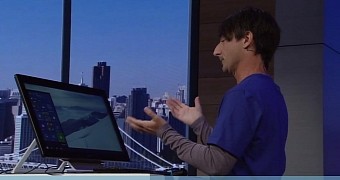Remember a couple years back when Canonical was showing us how you could transform your phone into a full-fledged Ubuntu PC? That was a more of a concept, but it's 2015 and that hasn't been made possible yet, at least not by Canonical. Microsoft just demoed the same thing with its Windows phone.
It would be easy to point fingers and say that Microsoft copied Canonical's idea, but it's not like there was already a working version of this concept. Canonical just showed us that it can be done, and it was one of the selling points of Ubuntu Edge, the super-phone that never happened. Microsoft just went on with their timetable and just did it.
Mark Shuttleworth, the founder of Canonical, pointed out a while back that we're carrying very powerful small computers in our back pocket, and we hardly use them. Canonical's idea was to connect the phone to a monitor, hook up a keyboard and a mouse, and your PC is ready for use. At first, it was presented under the name of Ubuntu for Android, but it later became a feature for the Ubuntu Touch (which is still under development).
Microsoft's Continuum project is weirdly similar with Canonical's
Perhaps Canonical should have patented this idea or the concept of transforming your phone into a PC, although it would have been one of those vague patents that everyone just hates. In any case, Microsoft managed to produce a working prototype, and they estimate that it will be feature-ready by the time Windows 10 is released this summer.
In any case, when all is said and done, Microsoft seems to have beaten Canonical to the punch, at least for this particular feature. On the other hand, Canonical is almost ready to achieve OS convergence between the phone and the PC. They will soon have a single operating system running on both, with the same underlying code, which is not something that Microsoft has mastered, at least not yet.

 14 DAY TRIAL //
14 DAY TRIAL // 